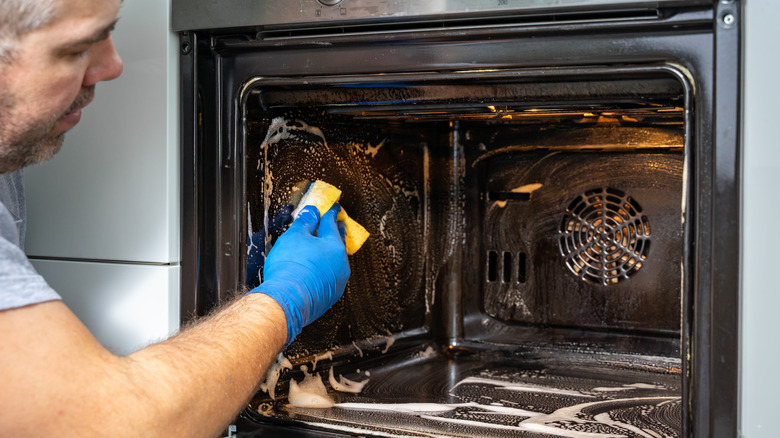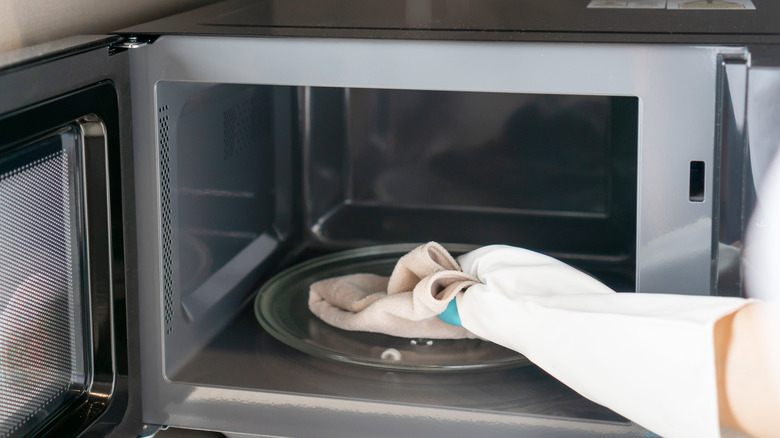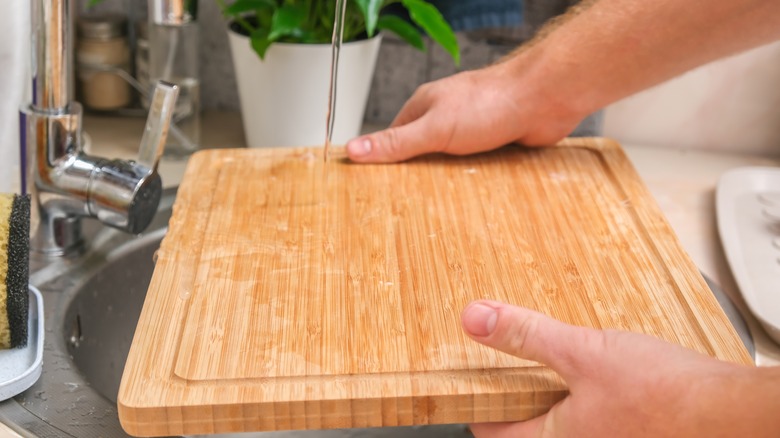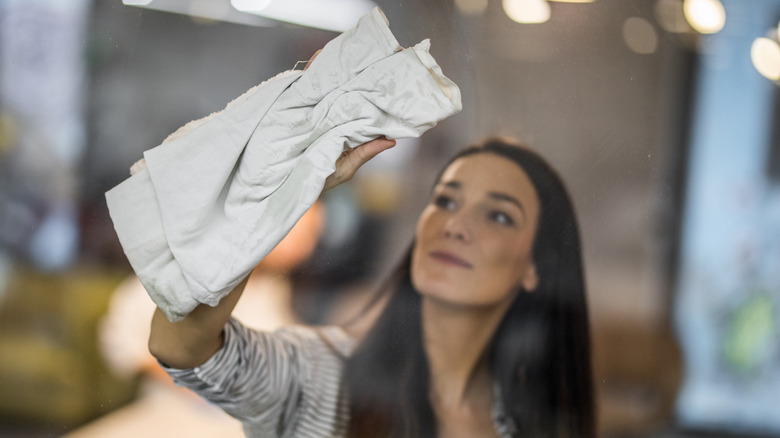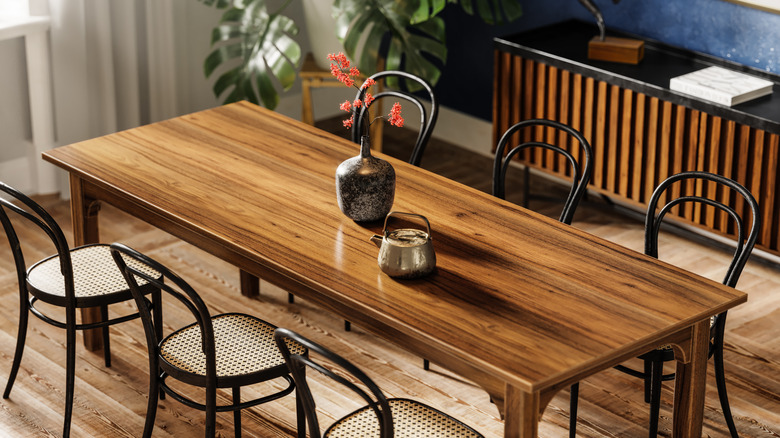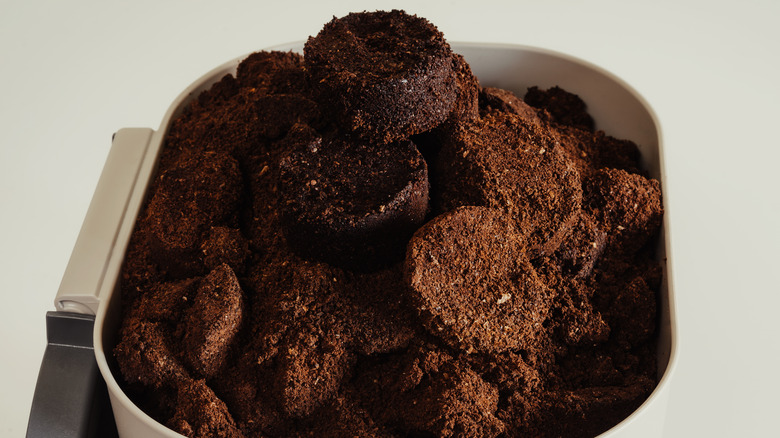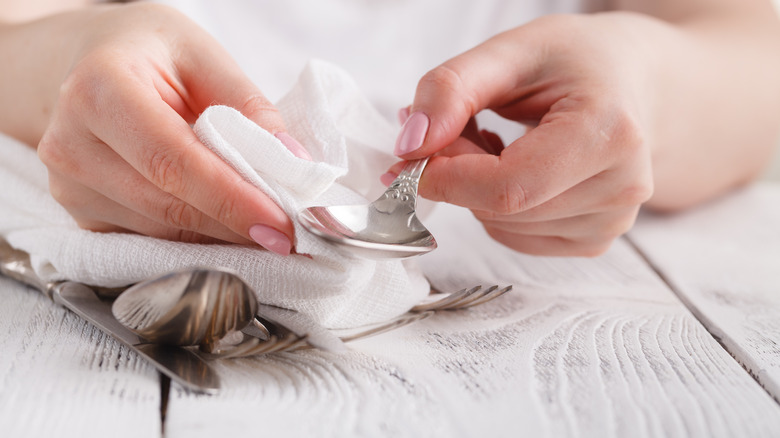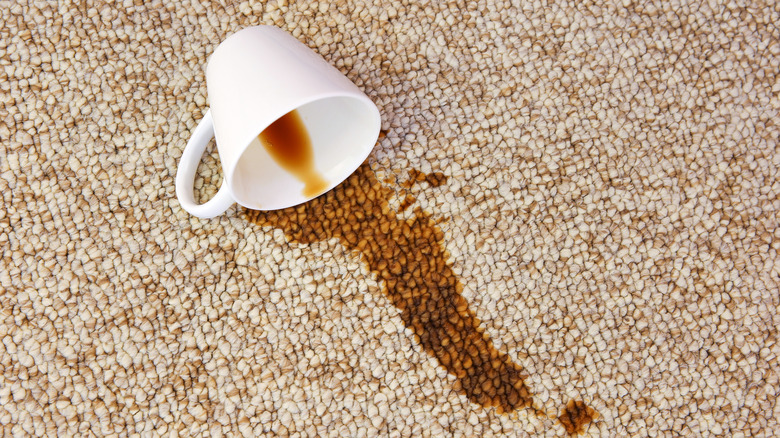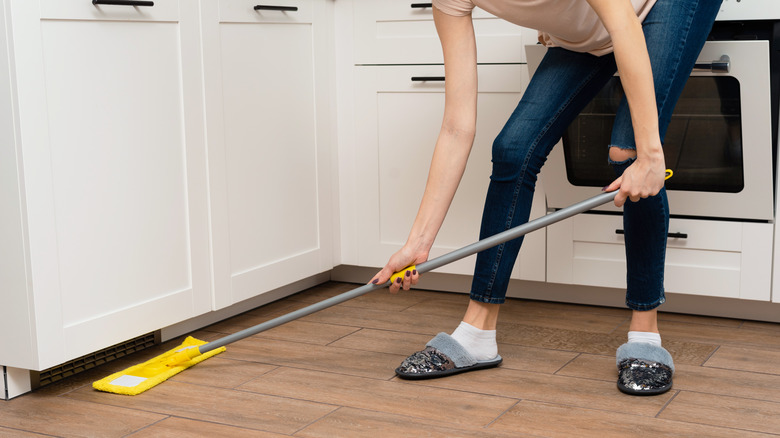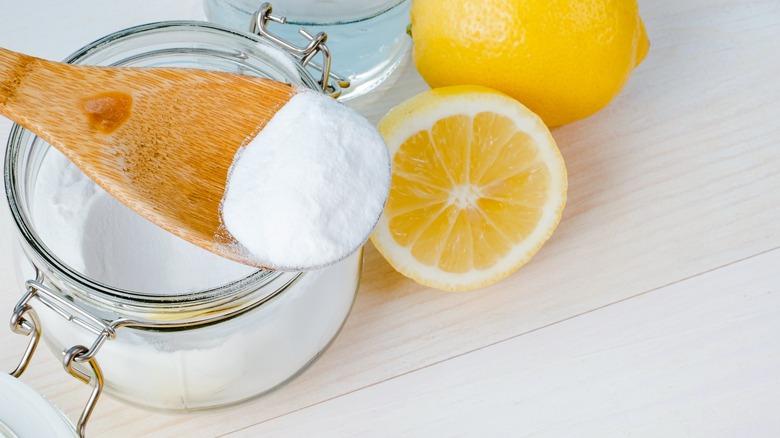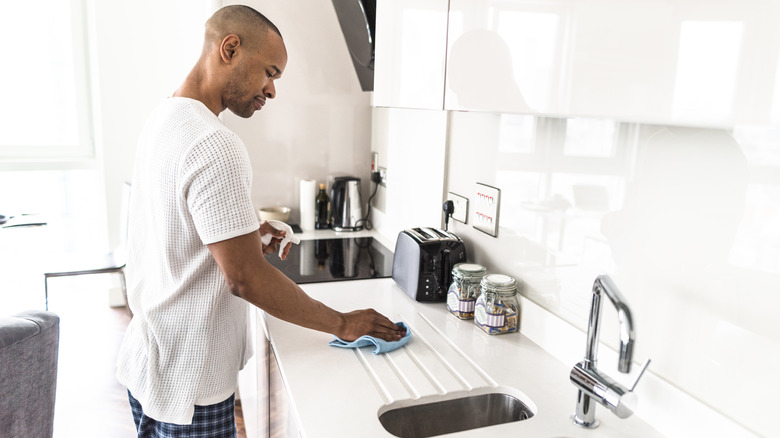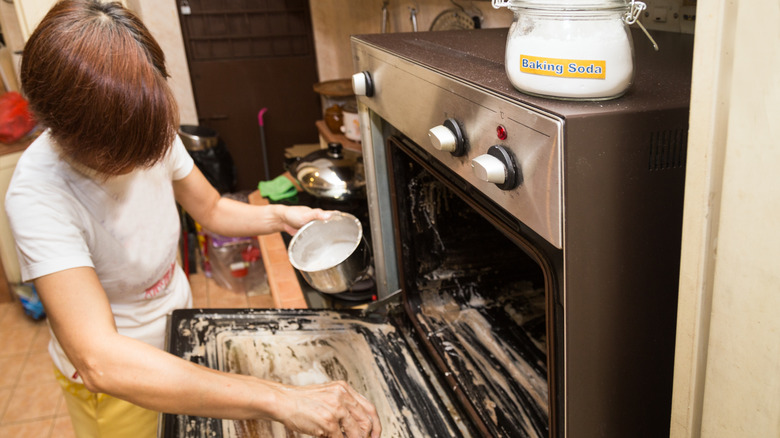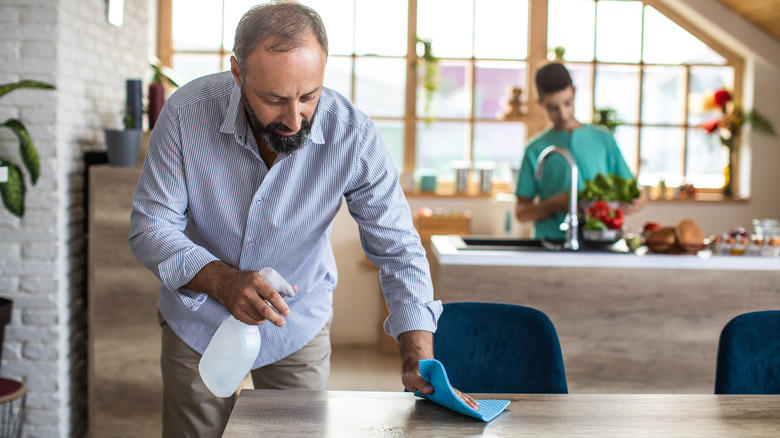Common Household Ingredients You Should Be Using To Clean Your Kitchen
When you reach for cleaning agents to get your kitchen sparkling, it's common to overlook powerful, natural ingredients hidden in your pantry or cupboards. While you may be quick to get the latest chemical-based cleaner you see in the stores, you likely have natural and effective cleaning solutions waiting at home. Turning to these cleaners isn't just about swapping out traditional cleaners for eco-friendly options. It's also about taking common household ingredients and using them to disinfect, scour, and leave your kitchen stunningly clean. From vinegar's surprising grease-cutting power to baking soda's ability to lift stains, these simple items help fight grime and dirt throughout your kitchen.
Choosing these natural cleaners allows you to transform your approach to cleaning your kitchen. For example, using lemon juice for its antibacterial properties or coffee grounds to deodorize and scrub burnt-on residue changes your cleaning routine, making it safer and more sustainable. This process also involves understanding how each ingredient works and what it brings to the table. You'll clean smarter when you use them, and they'll help you take a mindful approach to the ingredients you use to make your kitchen sparkle and shine.
Use white vinegar as a natural disinfectant
White vinegar is a powerful natural cleaning agent that you can use to freshen up the inside of your microwave, make your windows sparkle and shine, and clean your dishwasher or grimy oven. Mix 1 cup of white vinegar with 1 cup of water in a spray bottle, shake it to mix, and it's ready to use. Spray the mix onto windows or other surfaces, and get a clean cloth to wipe it away. Vinegar's natural acidity works very well to clean glass to give you a sparkling finish. It strips soap scum from dishwashers and helps get stubborn baked-on food out of your microwave. While it works wonders to clean the kitchen, you should be very careful around natural stone surfaces. Vinegar is strong enough to etch stone and damage wood floor finishes, so avoid getting it on these areas.
Household vinegar has roughly 5% acetic acid, and this helps it cut through grease and grime while also making it a mild disinfectant. A 2014 study in the mBio journal showed that it's strong enough to eliminate the bacteria that cause tuberculosis. It's also strong enough to remove mildew in damp areas, neutralizes odors, and can strip out some stains. Its disinfecting properties ensure that your home isn't just clean but also hygienic.
Hydrogen peroxide kills germs and bacteria on cutting boards
Hydrogen peroxide is great for cleaning wooden or plastic cutting boards. To use it, pour the peroxide right onto the cutting board, or mix it with water and spray it on. It may start to bubble, and this is how you know it's working. Leave it on the cutting board for 10 to 15 minutes to ensure it cleans your cutting board thoroughly. When it finishes bubbling, rinse the board under lukewarm water and dry it. If you have a stained plastic cutting board, make a paste from baking soda and peroxide. Spread it onto the stained area and let it sit for several hours or overnight. Then rinse and dry. Be careful when using hydrogen peroxide around the kitchen because it can bleach your clothing or dish towels if it splashes on them.
This ingredient has potent oxidizing properties that kill viruses, bacteria, and fungi on surfaces like cutting boards. Unlike bleach, peroxide is safer to use in your kitchen because its makeup is water and oxygen instead of harsh chemicals. So, you get a sanitized surface without any harmful residues.
Cornstarch cleans windows and glass
Cornstarch is a versatile cleaning ingredient that works wonderfully to clean glass surfaces and windows around your kitchen, and it can also refresh small rugs. To clean windows or glass, mix water and cornstarch to get a thick paste, and use a soft cloth to rub it gently onto the surface. Get a second cloth and wipe away the paste to leave a streak-free surface. For area rugs, sprinkle cornstarch onto the rug, leave it for a few minutes to absorb the odors, and vacuum it up. This will clean and deodorize your rugs and is an eco-friendly alternative to traditional chemical cleaners.
This ingredient cleans your kitchen so well and polishes surfaces due to its very fine, granular texture that helps it absorb dirt, moisture, and oils. It'll trap any it comes across and leave a clean, smooth surface when you wipe it off. Cornstarch is also fine enough that it won't scratch surfaces, making it an excellent cleaner for glass, delicate fabrics, or polished surfaces. By adding cornstarch to your cleaning regimen, you can get a clean, chemical-free home with minimal effort and maximum safety.
Olive oil helps polish kitchen tables, chairs, or cupboards
Olive oil is a wonderful way to polish wood furniture, including kitchen chairs, tables, and cupboards. To get an effective polish, mix a small amount of olive oil with vinegar and lemon juice. Use a soft cloth to apply the mixture to surfaces, gently rubbing it in to get an eco-friendly, easy polish that leaves a revitalizing shine. The natural ingredients ensure there is no harsh chemical exposure. However, while olive oil is great for items you clean regularly, it can turn rancid over time if left to sit for too long. Consider using mineral oil instead for furniture or wood items you don't clean frequently. Mineral oil gives you very similar benefits without risk of going bad, ensuring your wood stays polished and protected without unwanted side effects.
Using olive oil to polish and clean wood furniture helps you draw out the wood's natural beauty and shine in a chemical-free way. Adding lemon juice or vinegar into the mix helps remove any stains or grime, keeping your items looking and smelling fresh. This simple, natural approach preserves the integrity of your wooden pieces and supports a healthier living environment.
Coffee grounds scrub burnt-on residue
Did you know you can use plain coffee grounds to clean your pots and pans? When you finish with your coffee grounds, let them dry and sprinkle them onto any surface with burnt-on residue you want to clean. Use a sponge to scrub the pots to start breaking down the stains. As a bonus, if you drink coffee regularly, this is a cost-effective option because you don't have to buy anything extra. Thoroughly rinse the pots or pans when you get done scrubbing because the coffee grounds can leave stains, especially if you use them on porous surfaces like stone counters.
Why do coffee grounds work so well to knock out burnt-on residue? The secret is the natural abrasive qualities the grounds offer. It's just strong enough for them to help scrub away layers of grease and grime while still being fine enough not to scratch the surfaces of your pots and pans. Also, coffee grounds are great at neutralizing odors, leaving your cookware and kitchen smelling clean. This makes them an excellent choice for kitchen clean-up, combining cleaning power with deodorizing properties.
Non-gel toothpaste polishes silverware
Non-gel toothpaste helps you polish your silverware and it can also get water stains out of your wooden surfaces, like your counters or kitchen table. Put a pea-sized amount of toothpaste on a soft cloth to tackle the pesky stains or make your silverware shine. Gently rub it over the stained spot or silverware in circular motions. The toothpaste will work gently on these surfaces to help restore how they look without using harsh chemicals. Just remember to finish by wiping the items with a clean, damp cloth to remove any toothpaste residue when you're done.
The secret to why a white, non-gel toothpaste works for these everyday kitchen chores is its mildly abrasive properties. It'll gently scrub away tarnish and lift water stains from wood. The fresh smell that toothpaste leaves is a bonus. However, it's important to note that only white, non-gel toothpaste should be used. Colored or gel-based toothpaste may have ingredients that stain or damage delicate surfaces. Additionally, while toothpaste is mildly abrasive, avoid using it on surfaces that scratch easily to be safe.
Borax cleans dish towels and flooring
Borax is a powerful cleaning ingredient. It can do everything from making your laundry cleaner and carpets look newer to rejuvenating your flooring and dish towels. All you have to do is dissolve a few teaspoons of Borax in warm water. You can use this mix to clean windows, mop floors, soak your dish towels to refresh them, or spot-clean surfaces. For harder tasks, like cleaning stains on your carpets or rugs, sprinkle it right onto the problem areas before scrubbing. However, be careful when you use it because it can irritate your skin. It should also be kept out of reach of kids and pets because it's toxic if ingested.
Borax is a favorite cleaning product because it has antibacterial and antifungal properties, allowing you to get rid of smells or do a deep clean in the kitchen. These properties ensure Borax makes the surfaces visually clean while also sanitizing them to make your space healthier. It's also a great way to soften hard water, boosting the cleaning power of your detergents or soaps by stopping hard water minerals from reducing their effectiveness.
Black tea cleans and polishes wood counters, flooring, and cupboards
Black tea is a solid natural cleaning solution that works on wooden counters, furniture, and hardwood floors. To use it to clean hardwood floors, brew a pot of strong black tea and let it cool to room temperature. Then, dip a soft cloth or pour it into a mop bucket and wipe it onto your darker wood surfaces. The tea will revitalize and clean the wood, leaving behind a pretty shine. It's a cost-effective and eco-friendly alternative to traditional wood cleaners. When using it, wring out your mop or cloth so that it's not soaked. This minimizes how much moisture gets on your wooden surface and reduces the likelihood of damage or warping. Also, it's important to note that black tea works best for darker woods. The tannins can slightly tint the material, enriching the color of dark wood but potentially changing the hue of lighter wood.
The secret to why black tea is an effective wood cleaner and polish is because of the tannins. These are compounds that naturally occur in tea, and they work as a light polish to bring out the wood's natural coloring and give it a very subtle, natural shine. It is a non-abrasive, gentle cleaning agent that helps maintain the integrity and beauty of your wooden surfaces.
Baking soda and lemon juice remove rust from pots and pans
A combination of baking soda and lemon juice can help clean up rust spots on pots and pans. First, make a thick, spreadable paste out of the two ingredients. Put this mixture on the dirty parts of your pots and pans and scrub them using a soft brush. It should only take a few minutes of light washing. Once the paste is off, carefully rinse the pots and pans under cool water and then dry them thoroughly.
You can use baking soda and lemon juice to remove rust from your stainless steel or metal surfaces. Although baking soda is mildly abrasive, it doesn't damage the surface when you scrub it. Adding lemon juice strengthens the cleaning agent by reacting chemically with the baking soda, helping to break down and remove rust or stains from metal surfaces. This blend is also good for the environment. After you clean with it, it leaves behind a light, refreshing lemon scent.
Use essential oils in a disinfectant spray
Making a safe and effective disinfectant spray is as easy as getting a spray bottle, filling it with water, and adding a few drops of peppermint oil or tea tree oil. Spray it on anything you want to clean. After a few minutes, go back and wipe it down. This simple spray keeps your sinks, counters, and other kitchen surfaces clean and germ-free. However, while essential oils are a fantastic natural cleaning option, using them cautiously is important. Essential oils are potent, and if you don't dilute them correctly, they can be too strong for some surfaces, or even your skin. Additionally, households with pets, especially cats, should avoid using certain essential oils, as some of these oils can be toxic to animals. Dilute properly and use them responsibly to keep your home clean and safe for everyone.
Essential oils like peppermint and tea tree have pleasant scents and antibacterial and antifungal properties. These properties make them excellent options to help you create a simple kitchen cleaner that can eliminate bacteria, viruses, germs, and mildew on various surfaces. They can be an effective cleaning solution that's safer for home use than harsh chemical cleaners.
Baking soda helps scrub counters, sinks, and appliances
Baking soda should be at the top of the list when scrubbing stainless steel appliances or sinks, countertops, and oven interiors to make them shine. Sprinkle a fine layer of baking soda over whatever you want to clean, and then add a few drops of water to create a thick paste. Using a sponge or soft cloth, gently work the baking soda paste into the surface, focusing on stains or spots. It's a simple and effective way to tackle dirt and grease, and you'll rinse it away when you finish to get a clean surface. However, it's not safe to use on all surfaces, such as marble, as baking soda can etch marble counters and dull them.
The secret behind baking soda's cleaning prowess is due to the mildly abrasive texture, and it's a mild alkali that causes grease and dirt to dissolve and break down, making it easier to wipe them away. Baking soda also deodorizes as it cleans by absorbing and neutralizing odor molecules in your kitchen. This cleaning and deodorizing effect makes baking soda a must-have, whether you have a smelly appliance or a messy kitchen to tackle.
Isopropyl alcohol disinfects surfaces
Whether you want to disinfect countertops, clean your appliances, or take on ink stains, isopropyl alcohol works. Apply this directly to whatever surface you want to clean or dilute it with water at a 1:1 ratio in a spray bottle and spritz it around the kitchen. It'll air dry relatively quickly, or you can get a clean cloth and wipe the surface down. However, while isopropyl alcohol is a powerful cleaning agent, it's essential to use it carefully. It should always be used in a well-ventilated area due to its strong fumes. It shouldn't be used around open flames or heat sources, as it is highly flammable. Additionally, it can damage porous surfaces like acrylic and natural stone, so you want to perform a spot test on a small, inconspicuous area before you spray it all over the surface to ensure it won't cause damage.
The quick evaporation rate is a benefit of this cleaning agent, and this helps it clean without leaving streaks. This makes it useful for cleaning things like glass or electronics where excess liquid can cause damage. Additionally, isopropyl alcohol is a powerful disinfectant and germicide, and you can use it on various surfaces in your kitchen.
